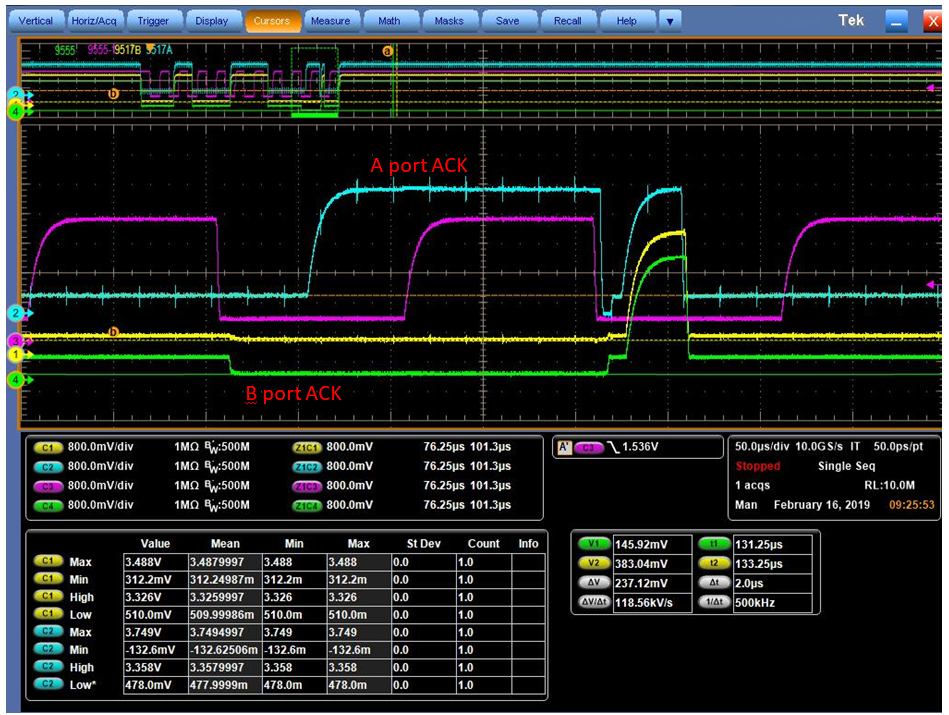Hi team,
My customer use the TCA9517 as below:
But the TCA9517 can't pass the low voltage from B port to A port that causing the communication failure between the Slave and Master.
Below are the waveform captured by customer:
The Channel 4 is the wave of the slave and Channel 1 is the wave of B port. There is a 100 ohm resister between the slave and TCA9517 causing the voltage of B port is a little higher than the Slave output voltage.
The voltage of the ACK low voltage in B port is about 383 mV.
According to the specs in the datasheet, the 383mV should be recognized as the low logic, but the test result is opposite.
Can you help to provide your comments about this?
Lacey
Thanks a lot!


